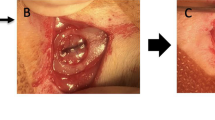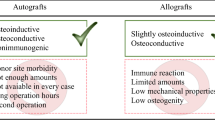Abstract
It is known that scaffold is a key factor in bone tissue engineering. The aim of this study was to improve the design of scaffold in order to achieve an effect of precisely matching the irregular boundaries of bone defects as well as facilitate clinical application. In this study, controllable three-dimensional porous shape memory polyurethane/nano-hydroxyapatite composite scaffolds were successfully fabricated. Detailed studies were performed to evaluate its structure, porosities, and mechanical properties, emphasizing the effect of different apertures of scaffolds on shape recovery behaviors and biological performance in vitro. Results showed its compression recovery ratios and shape recovery ratios of all scaffolds could reach more than 99 and 90%, respectively, which could let it more accurately match the irregular boundaries of bone defects. And also its cell proliferation ability was improved with the increase in the apertures. Thus, these scaffolds have potential applications for the bone tissue engineering.









Similar content being viewed by others
References
Altman GH, Diaz F, Jakuba C et al (2003) Silk-based biomaterials. Biomaterials 24:401–416
Nukavarapu SP, Kumbar SG, Brown JL et al (2008) Polyphosphazene/nano-hydroxyapatite composite microsphere scaffolds for bone tissue engineering. Biomacromol 9:1818–1825
Morozowich NL, Nichol JL, Allcock HR (2012) Investigation of apatite mineralization on antioxidant polyphosphazenes for bone tissue engineering. Chem Mater 24:3500–3509
Ma PX (2004) Scaffolds for tissue fabrication. Mater Today 7:30–40
Bab I, Ashton BA, Gazit D, Marx G, Williamson MC, Owen ME (1986) Kinetics and differentiation of marrow stromal cells in diffusion chambers in vivo. J Cell Sci 84:139–151
Hofmann S, Hagenmüller H, Koch AM, Müller R, Vunjak-Novakovic G, Kaplan DL, Merkle HP, Meinel L (2007) Control of in vitro tissue-engineered bone-like structures using human mesenchymal stem cells and porous silk scaffolds. Biomaterials 28:1152–1162
Zhang Y, Wu C, Friis T, Xiao Y (2010) The osteogenic properties of CaP/silk composite scaffolds. Biomaterials 31:2848–2856
Bhumiratana S, Grayson WL, Castaneda A, Rockwood DN, Gil ES, Kaplan DL, Vunjak-Novakovic G (2011) Nucleation and growth of mineralized bone matrix on silk-hydroxyapatite composite scaffolds. Biomaterials 32:2812–2820
Kasuga T, Fujikawa H, Abe Y (1999) Preparation of polylactic acid composites containing β-Ca(PO3)2 fibers. J Mater Res 14:418–424
Shikinami Y, Okuno M (1999) Bioresorbable devices made of forged composites of hydroxyapatite (HA) particles and poly-L-lactide (PLLA): Part I. Basic Characteristics. Biomaterials 20:859–877
Kasuga T, Ota Y, Nogami M, Abe Y (2001) Preparation and mechanical properties of polylactic acid composites containing hydroxyapatite fibers. Biomaterials 22:19–23
Otsuka K, Wayman CM (1998) Shape memory materials. Cambridge University Press, New York
Ota S (1981) Current status of irradiated heat-shrinkable tubing in Japan. Rad Phys Chem 18:81–87
El Feninat F, Laroche G, Fiset M, Mantovani D (2002) Shape memory materials for biomedical applications. Adv Eng Mater 4:91–104
Metcalfe A, Desfaits AC, Salazkin I, Yahia L, Sokolowski WM, Raymond J (2003) Cold hibernated elastic memory foams for endovascular interventions. Biomaterials 24:491–497
Metzger MF, Wilson TS, Schumann D, Matthews DL, Maitland DJ (2002) Mechanical properties of mechanical actuator for treating ischemic stroke. Biomed Microdevices 4:89–96
Gall K, Kreiner P, Turner D, Hulse M (2004) Shape memory polymers for microelectromechanical systems. J MEMS 13:472–483
Gall K, Dunn ML, Liu Y, Finch D, Lake M, Munshi NA (2003) Shape memory polymer nano composites. Acta Mater 50:5115–5126
Lendlein A, Langer R (2002) Biodegradable, elastic shape-memory polymers for potential biomedical applications. Science 296:1673–1676
Zhao XB, Du L, Zhang XP (2001) Brief Review of relations of structure and microphase separation of polyurethane. Polyurethane Ind 16:4–8
Zhu CC, Weng HY, Lyu GH, Zhang JL (2012) The latest development status of polyurethane industry at home and abroad. Chem Propellants Polym Mater 5:1–20
Li B, Zhang HL, Li ZH, Bao JJ, Xu GW (2008) Research progress and application of polyurethane materials in biological field. Polyurethane 4:96–100
Williams DF (2008) On the mechanisms of biocompatibility. Biomaterials 29:2941–2953
Hench LL, Polak JM (2002) Third-generation biomedical materials. Science 295:1014–1017
Mizushima Y, Ikoma T, Tanaka J, Hoshi K, Ishihara T, Ogawa Y, Ueno A (2006) Injectable porous hydroxyapatite microparticles as a new carrier for protein and lipophilic drugs. J Control Release 110:260–265
Itokazu M, Yang W, Aoki T, Ohara A, Kato N (1998) Synthesis of antibiotic-loaded interporous hydroxyapatite blocks by vacuum method and in vitro drug release testing. Biomaterials 19:817–819
Soriano I, Évora C (2000) Formulation of calcium phosphates/poly (d, l-lactide) blends containing gentamicin for bone implantation. J Control Release 68:121–134
Komlev VS, Barinov SM, Koplik EV (2002) A method to fabricate porous spherical hydroxyapatite granules intended for time-controlled drug release. Biomaterials 23:3449–3454
Yang PP, Quan ZW, Li CX, Kang XJ, Lian HZ, Lin J (2008) Bioactive, luminescent and mesoporous europium-doped hydroxyapatite as a drug carrier. Biomaterials 29:4341–4347
Matsumoto T, Okazaki M, Inoue M, Yamaguchi S, Kusunose T, Toyonaga T, Hamada Y, Takahashi J (2004) Hydroxyapatite particles as a controlled release carrier of protein. Biomaterials 25:3807–3812
Alam MI, Asahina I, Ohmamiuda K, Takahashi K, Yokota S, Enomoto S (2001) Evaluation of ceramics composed of different hydroxyapatite to tricalcium phosphate ratios as carriers for rhBMP-2. Biomaterials 22:1643–1651
Yu JH, Chu XB, Cai YR, Tong PJ, Yao JM (2014) Preparation and characterization of antimicrobial nano-hydroxyapatite composites. Mater Sci Eng, C 37:54–59
Yu JH, Xia H, Teramoto A, Ni QQ (2017) Fabrication and characterization of shape memory polyurethane porous scaffold for bone tissue engineering. J Biomed Mater Res A 105:1132–1137
Li GQ, John M (2008) A self-healing smart syntactic foam under multiple impacts. Compos Sci Technol 68:3337–3343
Ni QQ, Zhang CS, Fu YQ, Dai GZ, Kimura T (2007) Shape memory effect and mechanical properties of carbon nanotube/shape memory polymer nanocomposites. Compos Struct 81:176–184
Acknowledgements
This work was supported by the Sino-foreign science and technology cooperation project of Anhui Province 2017 (1704e1002213), JSPS KAKENHI 15H01789, and 26420721.
Author information
Authors and Affiliations
Corresponding author
Electronic supplementary material
Below is the link to the electronic supplementary material.
10853_2017_1807_MOESM1_ESM.docx
Supplementary information is about SEM images of MG-63 cultured on the four porous SMPU/nHAP composite scaffolds after 1, 3, and 5 days. (DOCX 1845 kb)
Rights and permissions
About this article
Cite this article
Yu, J., Xia, H. & Ni, QQ. A three-dimensional porous hydroxyapatite nanocomposite scaffold with shape memory effect for bone tissue engineering. J Mater Sci 53, 4734–4744 (2018). https://doi.org/10.1007/s10853-017-1807-x
Received:
Accepted:
Published:
Issue Date:
DOI: https://doi.org/10.1007/s10853-017-1807-x




